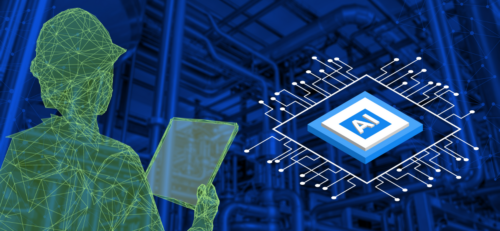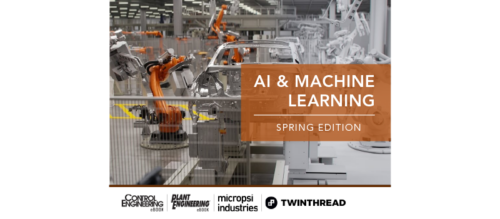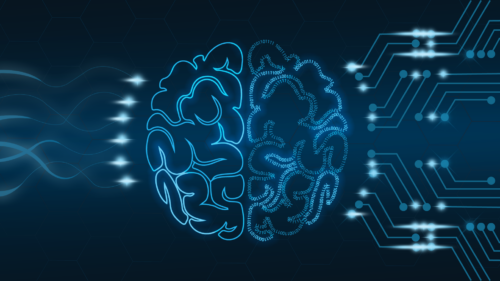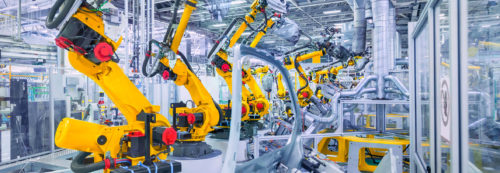How advanced digital twin technology narrows the industrial skills gap
Digital twin technology such as immersive field simulators (IFS) can help companies narrow the skills gap by offering a training environment that offers an accurate replica of the world they inhabit with virtual reality and mixed reality tools.
Learning Objectives
- An immersive field simulator (IFS) provides a virtual reality (VR)/mixed (MR)-based training solution.
- VR learning is four times faster than traditional classroom instruction and four times more focused than e-learning.
- IFS provides a detailed accurate training environment that replicates the look and feel of an actual plant environment.
In today’s demanding industrial environment, there is an urgent need for training that helps workers acquire knowledge and develop new skills they can perform on the job. Without proper technical instruction, plant personnel are prone to mistakes that can hinder operational and business performance.
According to industry data, more than a quarter of plant incidents occur because workers lack competence. Many situations require fast response based on an accurate understanding of equipment in the appropriate context. A surging compressor, flow reversal in an FCC or boiler drum level instability are all situations requiring prompt and effective action to avoid bad consequences.
Unfortunately, the current business environment has restricted the ability to perform classroom instruction at most industrial sites. Knowledge transfer between seasoned employees and new hires has become more difficult, if not impossible.
Faced with increasingly complex technology and an experienced workforce nearing retirement, plants need robust training solutions that accurately depict real-world environments. Traditional training often fails to help panel and field operators and maintenance technicians become better at their jobs. The result can be reliability issues and unplanned downtime
Evolution of training simulators
Manufacturers have long used operator training simulator (OTS) systems to train process operators in large-scale industrial applications. These simulators are used for instruction on a wide range of operational procedures, imparting fundamental process understanding and maintaining and improving occupational skills.
Modern OTS solutions combine dynamic process simulations, emulated control systems and replicated interfaces to recreate the look, feel and behavior of the actual plant. They provide an effective means for optimizing processes and gaining operations experience. Simulation offers a protected area for instruction on new job scenarios, which can be relearned at any time.
OTS systems also have employed digital twin technology to replicate physical processes and assets in a virtual environment. This approach provides the closest possible virtual image of a real control system, serving as a simulation model of reality with all components, their characteristics, functionalities and parameters.
Digital twins developed by process experts can help retain and transfer valuable expertise to a newer control room and field operators. The digital twin models can be static or dynamic high-fidelity process models; dynamic control system models; or 3D spatial models created from CAD drawings, light detection and ranging (LIDAR) scans, or even photos taken using digital algorithms.
Digital twin helps industrial training
Using a digital twin, training courses can be designed for:
- Familiarization with layout, including the location of main pieces of equipment and identification of emergency equipment
- Line tracing and location of instrumentation, control and relief valves and start-and-stop motors
- Start-up, shutdown, malfunctions and normal operations
- Rounds and sampling procedures
- Lockout and tagout (LOTO), and equipment isolation.
As a result of ongoing development efforts, a new type of digital twin combines a 3D physical twin of the plant with a mathematical twin of the process to enhance the training of multiple personas within a typical industrial facility. This technology brings actual plant experiences to life in an efficient, controlled and safe learning environment.
Immersive training: Virtual reality, mixed reality
For many years, control room personnel had comprehensive training programs, while field workers relied on hands-on instruction to learn their job functions. This situation has evolved with new immersive simulation technology enabling teams of field operators and technicians to interact via virtual walk-talkies and achieve a training experience similar to their counterparts working at control room consoles.
An immersive field simulator (IFS) provides a virtual reality (VR)/mixed (MR)-based training solution, which helps better train today’s industrial workforce. The IFS can be used to extend console operator simulator training to field operators for credible, realistic and immersive collaborative training experiences. This enables operating companies to increase worker competency while enhancing safety, to maximize plant performance.
According to a recent PricewaterhouseCoopers study, VR learning is four times faster than traditional classroom instruction and four times more focused than e-learning. It also inspires 300% greater confidence in trainees doing their jobs in the real world. The codification of training with sight and sound makes VR learning much closer to hands-on “practice by doing” than existing e-learning techniques.
The IFS design is the culmination of years of development in digital twin technology coupled with decades of real-world process domain experience. The simulator embeds industry know-how via digital twins and experience-driven insights to drive intelligence beyond traditional Big Data-based solutions.
Some automation suppliers have offered operator training simulators to replicate the functions and activities of an industrial control room setting. However, this training-based control room was not connected to the actual production operation but rather was tied to a digital twin of the process and assets. With an IFS, the same digital twin has now been paired with a digital twin of the 3D world – essentially the plant itself with details such as handrails, ladders and stairs, as well as individual assets such pumps, compressors and pipes. The replications are linked to a mathematical process model so an action such as turning a valve in the virtual world also changes the variables in the back-end digital twin of the process. These functions are connected to the control room training simulator.
IFS software uses common immersive gaming technology to create the physical, three-dimensional digital twin of the plant. This approach applies to any facility with 3D CAD engineering drawings or laser-scanned imagery. The 3D plant digital twin is married to the digital twin of the facility’s process and assets.
The design of the IFS initially focused on training personnel concerned with the process control side of industrial operations; further developments have centered around maintenance, reliability and safety scenarios that can occur in the plant. Integration of the simulator’s 3D-immersive modeling environment with a traditional OTS enables field and panel operators to train together in a safe environment, learning collaborative skills essential for effective operations.
Implementing virtual reality, mixed reality training
In the same way pilots practice takeoffs and landings with a flight simulator, an immersive training simulator offers a smooth, virtual walkthrough to familiarize workers with the operations they’ll encounter during day-to-day jobs. It includes avatars that represent virtual team members. This approach helps to improve skill retention versus traditional training methods and reduces the length of technical training.
As a cloud-based solution, the IFS responds to the frequent changes to processes and assets typical of refineries, petrochemical plants and other process industry facilities. The use of cloud technology simplifies updates to the back-end digital twin to help reflect the current configuration within the plant and in the field. As such, training departments can enhance management of change when it comes to swapping out equipment, animations, etc. This capability is almost impossible with older, less dynamic technology.
In addition, including an instructor portal as part of the IFS allows training supervisors and instructors to build custom training modules on their own within the 3D environment and the operator training simulator without the need for coding.
The IFS is intended to be a hardware-agnostic, extensible platform to accommodate future developments in VR and MR technologies. In this case, mixed reality exists in the space between immersive and augmented reality (AR). It blends VR, which is fully immersive and disconnected from the trainee’s actual physical surroundings and augmented reality (AR), which superimposes images on the real world.
With IFS technology, plants can use holographic computers and mixed reality headsets to simulate various scenarios – such as primary failure and switchovers, and cable and power supply failures – that train and test personnel on their skills.
For example, mixed reality can be used to build a hologram enabling trainees to work on a large compressor in the classroom. Students manipulate a controller in their hands to interact with the equipment in a very authentic 3D manner. The solution also incorporates sounds such as warning sirens, running pumps, etc., to increase the realism of the instructional experience.
Trainees can sit at a simulator and go through the exact set of steps for a repair or maintenance activity as they would in the real world and then go out and accurately perform the same procedure on physical equipment in the field.
IFS is a preferable method of training for today’s digital-native workforce, which is taking over many complex job responsibilities on the plant floor. Traditional classroom and e-learning techniques are often ineffective with the new generation of workers. In a study by the National Training Laboratory, retention rates for VR learning were around 75%, and it helped fill the skills gap between experienced employees who are retiring in large numbers and younger workers who must gain know-how in a wide range of critical operations.
Digital twin solutions will be developed to address asset performance management and relate the health and performance of crucial assets to the 3D digital twin that exists today.
The drive for higher efficiency and greater safety in an ever-more-stringent regulatory environment is causing plant owners to consider new ways to enhance training of their personnel.
Unlike equipment assets, people are mobile and are the key enabler of plant’s safety and productivity. Their skills vary by individual with each one learning and retaining knowledge differently.
A new generation of IFS software incorporates VR to provide plant operators and field technicians with a detailed, accurate training environment. This solution helps improve training times beyond traditional classroom-based learning and minimizes situations that can result in operational downtime.
Vincent Higgins, global director/general manager, Honeywell’s Workforce Competency Solutions. Edited by Chris Vavra, web content manager, Control Engineering, CFE Media and Technology, cvavra@cfemedia.com.
MORE ANSWERS
Keywords: digital twins, immersive field simulator, virtual reality
CONSIDER THIS
What benefits could your plant gain from digital twins and virtual reality simulator?
Original content can be found at Control Engineering.
Do you have experience and expertise with the topics mentioned in this content? You should consider contributing to our CFE Media editorial team and getting the recognition you and your company deserve. Click here to start this process.






